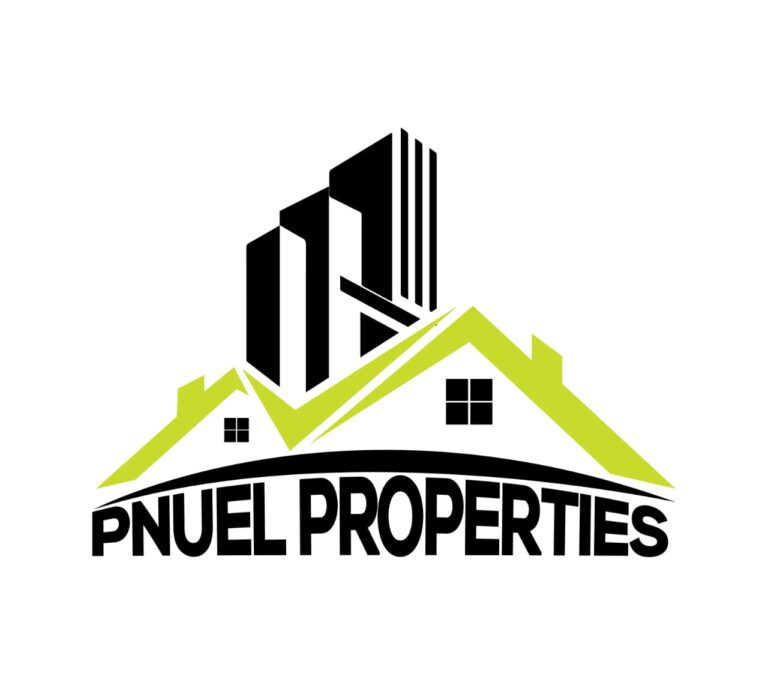How To Spot A Property With A High Investment Opportunity
A fantastic strategy to guarantee your financial future through real estate investment is to find a property with high investment potential. We’ll look at some critical things to consider in this article while looking for a home that delivers a high return on investment (ROI).
Below are the major points to be discussed.
-
Look for properties in up-and-coming neighborhoods
-
Consider the property’s age and condition
-
Evaluate the local rental market
-
Consider the property’s features and amenities
-
Look for properties with multiple income streams
-
Research the local economy and the job market
-
Check for potential zoning changes
1. Look for properties in up-and-coming neighborhoods

Finding houses in neighborhoods experiencing growth can be a great way to find high-investment prospects. Here are some tips:
Research demographic trends
Determine whether the neighborhood is likely to expand and improve in the future by looking at local demographic patterns. For example, the population’s age and income.
Look for signs of gentrification
Look for gentrification indications, such as ongoing construction projects, rising property values, and an influx of existing businesses and residents to determine whether a neighborhood is undergoing gentrification.
Look for undervalued properties
Keep an eye out for homes that aren’t as expensive as others in the area because they could appreciate significantly.
Observe neighborhood news and developments
Keep up with neighborhood news and developments that could affect property values, such as newly formed companies, transportation projects, and forthcoming events.
Make connections with local real estate experts
Make connections with local real estate experts, such as real estate agents and property managers. These experts have a thorough understanding of the regional real estate market and can offer insightful information on emerging neighborhoods.
Explore the area
Take a stroll around the area and search for homes that could use remodeling or upgrading. Find homes with solid foundations that can be upgraded to raise their value.
Meet the neighbors
Engage in a conversation to get a sense of the area. How do they like living there? Ask them about the neighborhood. You can improve your chances of finding a home in an area with strong investment potential by paying attention to these suggestions.
2. Consider the property’s age and condition

The age and condition of a property can have a significant impact on return on investment (ROI). Here’s how:
Older properties may require extra maintenance and repairs.
Older properties may require more maintenance and repairs, which can increase the cost and reduce the overall return on investment. The return on investment (ROI) of a property may be impacted if it requires costly renovations to bring it up to current standards.
Up-to-date properties have greater rental value
Well-maintained and up-to-date properties, on the other hand, often have a higher rental value and provide a greater monthly income. Furthermore, these homes are more likely to attract high-quality tenants ready to pay a premium for a well-maintained property.
New properties have a higher appreciation potential
New properties have an increased potential to increase in value due to their features and amenities. Moreover, area development and remodeling projects can boost property values and increase the total return on investment of a property.
Location and market conditions also play a role
When calculating the ROI of a property, location and market conditions should not be overlooked. Age and condition of the property are key factors but other elements such as locality, supply & demand, etc. Will also impact the overall ROI.
3. Evaluate the local rental market

To invest in an investment property, you need to analyze the local rental market. Properties in high-demand residential regions can provide a consistent rental revenue stream, increasing your ROI. Look for places with low vacancy rates and high rent costs, as these are signs of a healthy rental market. Here are some notes:
Research rental rates
Investigating typical rental prices is the key to real estate success. You can find the average value of properties like yours in the vicinity by browsing online or consulting a real estate specialist. Be sure to consider factors such as the type, size, and number of rooms before making any decision.
Analyze the demand for rental properties
To evaluate the demand for rental properties in a particular area, it’s imperative to look at multiple factors such as the number of rental properties available, the average time taken to fill a vacancy, and the number of applicants per property. Through this analysis, you can estimate rental demand in an area.
Look at the local economy
While considering the local economy, it’s imperative to consider the unemployment rate, job growth, and population growth. These factors can influence rental property demand.
Study rental market trends
It is essential to stay abreast of rental market trends, such as the average rent rate and the demand for rental properties among others. Keeping track of these figures over time can help you determine whether the market is moving upwards, downwards, or remaining steady.
Consider the rental market’s seasonality
It’s imperative to consider variations in rental demand throughout the year. In some areas, you may find a surge of people looking for residential properties during the summer season. However, other regions may be more active during winter. Being aware of these seasonal fluctuations can help you better plan and manage your rental strategies.
4. Consider the property’s features and amenities

When determining a property’s prospective return on investment, it is critical to consider its characteristics and facilities. Here are some things to consider:
Square footage
Because property size can affect rental value, seek residences with a suitable combination of living space, bedrooms, and bathrooms.
Amenities
Consider the type and quality of amenities provided by the property, such as appliances, HVAC systems, and electrical and plumbing systems. Modern, high-quality amenities can boost rental value and attract desirable tenants.
Parking
Parking is a vital amenity for many renters. Therefore, evaluate the availability and type of parking, such as on-street, off-street, or a dedicated parking space.
Outdoor space
Outdoor spaces, such as a balcony, deck, or backyard, can add value to a home and raise its rental value. Look for residences with well-kept and pleasant outdoor spaces.
Energy efficiency
Energy-efficient properties lower renters’ energy bills while increasing rental value. Look for properties with energy-saving features like double-paned windows, efficient lighting, and high-efficiency HVAC systems.
5. Look for properties with various revenue streams

Identifying properties with numerous income sources is a valuable approach to increasing return on investment. Investing in a duplex or multi-unit property can be rewarding. Not only do they generate more money than single properties, but you also have the potential to get income from multiple sources – making the return on investment larger overall. Here are some hints to help you identify such properties:
Look for multi-unit properties
Properties with multiple units, such as duplexes or triplexes, can provide multiple rental incomes from a single property.
Consider properties with separate living spaces
Properties with a separate living space, such as a basement or guest house, can be rented out to provide additional rental income.
Invest in mixed-use properties
Mixed-use properties are buildings with residential and commercial spaces. You can rent out commercial space to businesses while generating rental income from residential units.
Look for properties with garages or parking space
Properties with garages or parking spaces can be rented out separately to generate an additional income stream.
Invest in vacation rentals
Vacation rentals, such as cabins or beach houses, can provide short-term income.
Consider investing in commercial properties
Commercial properties can provide multiple income streams from different tenants renting out separate spaces within the building.
Look for properties with developed land
Properties with extra land for development can generate income by building and selling existing units on the land. By looking for properties that offer multiple income streams, you can maximize your return on investment and reduce your risk. However, it’s imperative to remember that managing multiple income streams can be more complex, so you should have a plan in place for managing and maintaining each income source.
6. Research the local economy and the job market

Researching the local economy and job market is an essential step in identifying a property with a high investment opportunity. Here are some key factors to consider when researching the local economy and job market:
Economic indicators
Begin by examining the area’s overall economic metrics, such as gross domestic product (GDP), per capita income, and poverty rate. This data can indicate the area’s overall economic health.
Job Market
Search for places with a robust rental market and a developing job market. Locations with a high concentration of jobs in rising industries, such as healthcare or technology, may be very appealing.
Population trends
Examine population trends in the area, including general population increases and demographic trends. Rental properties may be in high demand in areas with a growing population, particularly among key demographic groups such as young professionals or retirees.
Real estate market trends
Study the area’s real estate market trends, such as average rental prices, vacancy rates, and rent rise rates. This data can provide insight into the rental market’s general health.
Local infrastructures
Examine the area’s local infrastructure, such as transit alternatives, public schools, and amenities like parks or shopping malls. Renters may be more interested in areas with solid infrastructure, raising rental demand.
Local legislations
Check local legislation that may impact the rental market, such as rent control laws or zoning regulations. These restrictions can affect the profitability of a rental property, so it’s critical to understand them before investing.
Business climate
Examine the local business climate, including the availability of business financing, local taxes, and other factors that may impact the entire economy. A healthy business climate may indicate a healthy rental market.
7. Check for potential zoning changes

As a real estate investor, it’s essential to consider any potential zoning changes when looking for properties with high investment potential. Zoning laws can impact the value and possible uses of a property, making it essential to research current and potential zoning regulations before investing.
Here are some ways to research zoning changes and their impact on real estate investment:
Contact the local Zoning Board
Any real estate investor should consult the local Zoning Board. They may advise you on current zoning regulations and planned changes. In addition, they may explain how the regulations affect the property you’re considering. Understanding zoning rules allows you to make informed judgments about whether to invest in a specific property.
Research and planned developments
Keep an eye out for any proposed developments in the region that may impact local zoning restrictions. If an upcoming shopping complex is planned, zoning laws may be altered to suit the proposed development. You can stay ahead of any future changes in zoning laws by being informed about potential developments.
Understand the current zoning regulations
It’s critical to understand the current zoning regulations in the area and how they affect the property you’re contemplating. For example, if the land is solely zoned for residential use, you may not be able to use it for commercial purposes. Understanding the existing zoning regulations can help you analyze the property’s possible uses and determine whether it’s a smart investment option.
Consider potential property value changes
Zoning changes can impact property value, positively or negatively. For example, if zoning regulations change to allow for more development on the site, the value may rise. In contrast, if zoning restrictions change to limit property uses, value may fall. You can make an informed judgment about whether to invest in a property by considering prospective zoning changes.
Conclusion
Checking for potential zoning changes is crucial to real estate investment. By researching local zoning laws, staying informed about planned developments, and considering potential changes in property value, you can make informed decisions about whether a particular property is worth investing in. Remember to work with a local real estate professional who can provide valuable insights and guidance on zoning laws and regulations in the area.




